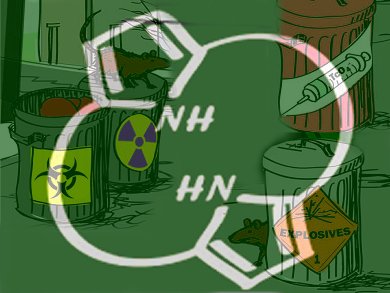Oligopyrroles represent a diverse class of molecular receptors that recently have attracted interest as receptors and chemosensors for hazardous materials, i.e., radioactive and highly explosive compounds. This relates to several issues of paramount importance in today’s society like the current push towards “cleaner” energy sources, concerns associated with nuclear power, as well as forensic analysis and national security.
Whereas cation coordination generally relies on the donor ability of the pyrrolic nitrogen, neutral substrate and anion recognition is typically achieved through hydrogen bonding through the pyrrolic N–H moiety. The selectivity of the pyrrolic macrocycle can be tuned by altering the shape and/or size of the binding cavity.
Many but not all expanded porphyrins possess extended π-conjugation pathways, which result in unique optical features, making these systems attractive for use as colorimetric and fluorimetric sensors.
As there is still a need to create better receptors, obtain more effective extractants, improve chemosensor detection levels, and develop field-ready devices, Brett M. Rambo and Jonathan L. Sessler, University of Texas, Austin, TX, USA, discuss oligopyrroles and their unique electronic features to inspire additional progress in pursuit of these challenging goals.
- Oligopyrrole Macrocycles: Receptors and Chemosensors for Potentially Hazardous Materials,
B. M. Rambo, J. L. Sessler,
Chem. Eur. J. 2011, 17.
DOI: 10.1002/chem.201100050



